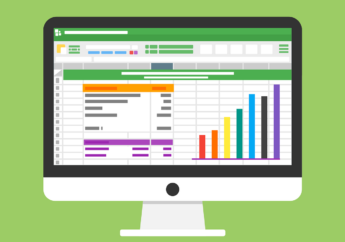The Importance Of Eco-Friendly Packaging
by Abdul Aziz Mondal Business Development Published on: 05 December 2023 Last Updated on: 14 November 2024

As environmental knowledge spreads, consumers increasingly seek out products with minimal ecological impact. Packaging delivers goods to customers, making sustainable options critical for modern businesses balancing convenience and sustainability. Numerous reasons demonstrate why eco-friendly packaging has become essential.
Understanding Customer Expectations
Rising awareness of environmental, health and ethical issues shapes how consumers spend. Plastic waste frustrates buyers, though effective packaging protects products. Certain customers exclusively purchase from eco-conscious companies aligning with their values. Adopting green practices benefits sustainability and satisfies customer needs.
Surveys indicate over half of consumers are willing to pay more for environmentally friendly goods. 80% want full transparency into product origins and production. 40% globally factor social responsibility and eco-policies into purchases. Sustainable packaging demonstrates shared values.
Evaluating Available Options
For forward-looking companies, integrating sustainability throughout operations is vital. Reviewing all business facets facilitates identifying areas needing green improvements. As packaging directly touches customers, optimizing sustainability makes an outsized impact.
When evaluating packaging, reducing plastics and other carbon-heavy materials is crucial. Also critical is maximizing recycled content. Finally, switching to alternative sustainable materials, like recycled polythene from Polystar Plastics, future-proof packaging.
Biodegradable plant-based wrappers, recycled paper, and reusable shipping containers are other excellent options. Smart material selection minimizes environmental damage across production, transportation and disposal. Life cycle assessments accurately gauge impacts.
Implementing Sustainable Packaging Changes
After identifying areas needing improvement, companies must determine practical next steps for pivoting to eco-friendly packaging. While each business’ transition plan depends on specific operations, some overarching guidance applies.
- First, set reasonable timelines. Rushing production changes risks profit losses from scrapping existing materials or unsuitable new options. 12-18 months gives time to use up present packaging and source alternatives. Consider starting with top-selling items, and then standardizing sustainable options across all product lines.
- Second, research costs before transitioning. Biodegradable or compostable packaging generally costs 20-30% more currently. However, prices are falling as demand expands options. Additionally, sustainable packaging lasts longer in transit with less damage, providing supply chain savings.
- Third, find suppliers aligning with ecological commitments. Seek vendors with sustainable practices and materials if packaging production is outsourced. For greater oversight, bringing design and assembly in-house may be preferred. Consider checking different database resources to discover available supplies meeting the required criteria.
- Finally, collaborate with partners like logistics companies on optimizing delivery packaging and waste reduction. Engage employees too for ideas and feedback; they directly see packaging performance impacts.
While each situation differs, following general guidelines helps businesses seamlessly and affordably implement packaging changes benefiting the planet. Reach out for further custom advice tailored to your operations.
Reaping Reputational Rewards
Informing customers about sustainability initiatives is recommended. Existing patrons will be pleased their purchases now support a green business. Publicizing ethical practices significantly enhances company’s reputation. New customers with shared values may emerge.
Prominent press releases, website updates, social media and point-of-sale signage spread the word. Proactively communicating transforms packaging changes into marketing assets highlighting environmental commitments. This engenders community goodwill and trust.
Quantifiable Environmental Benefits
Regardless of initial motivations, implementing green policies demonstrably benefits the environment, especially packaging. Using sustainable, recyclable or biodegradable materials keeps them from landfills and microplastic pollution.
With single-use plastics being phased out and major corporations announcing packaging changes, now is the ideal time to act. For example, Unilever aims for all packaging to be reusable, recyclable or compostable by 2025. Every business optimizing packaging contributes to global ecological health.
Leveraging Available Support
After maximizing packaging sustainability, consider further green initiatives. Government bodies offer grants and funding to qualifying environmentally conscious businesses, assisting the 2050 net zero emissions target.
Various financial incentives exist for different green projects and companies. Checking eligibility requirements makes additional sustainability measures more feasible. Non-profits also provide useful implementation resources.
Future Outlook
While present options for eco-conscious packaging are plentiful, innovations on the horizon provide even more sustainable solutions using less resources and energy. Flexible packaging is increasingly biodegradable and compostable thanks to plant-based materials like cellulose. These durable pouches and bags keep foods fresh but fully decompose after use. Compostable bio-based padding made from upcycled byproducts further minimizes waste.
Molded pulp made from recycled paperboard and newsprint offers plastic-free packaging options as sturdy as styrofoam. Custom-molded pulp perfectly fits and protects items with less processing energy and no residual waste.
New biologically derived bioplastics utilize plant starches versus oil. These use less energy in production, keep carbon locked up after disposal, and decompose in industrial composters. However, more progress is needed before wide application.
Various emerging technologies also show promise. For example, processing cellulose nanofibrils from wood pulp creates barrier coatings reducing plastic in food packaging. Unique water-soluble seaweed-based wraps serve perishables sustainability.
With research expanding eco-packaging possibilities, smarter designs will provide needed protection while integrating complete recyclability, reusability, and biodegradability. Keeping abreast of innovations ensures you stay future-ready. The green packaging revolution has only just begun.
In Summary
Boosting packaging sustainability is straightforward: increasing recycled content substantially decreases carbon footprints and resource consumption. While the packaging may seem minor, collectively making eco-friendly changes benefits the environment, however small each improvement. We all must participate to protect the planet.
Read Also:



































































































